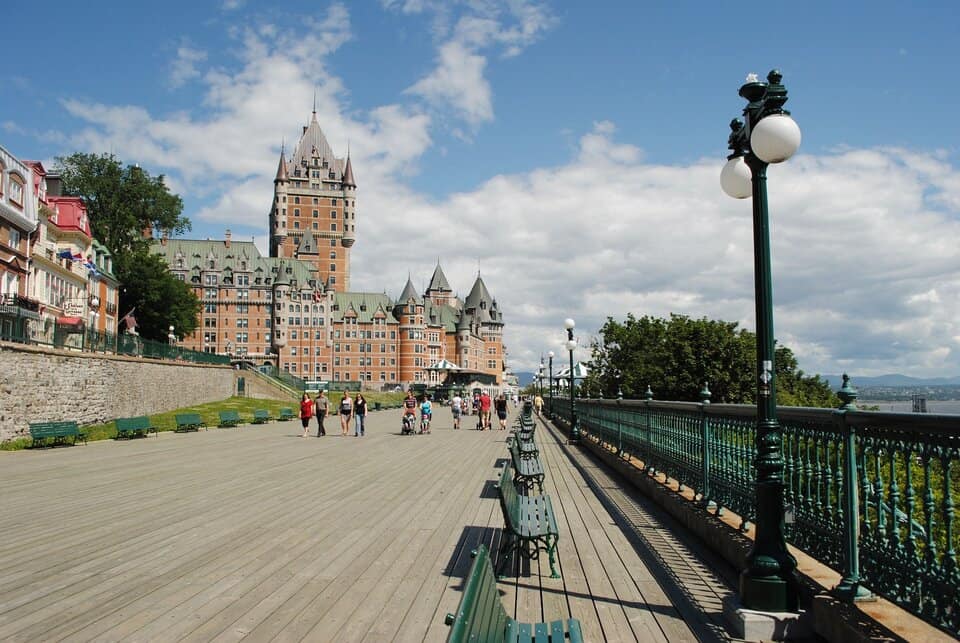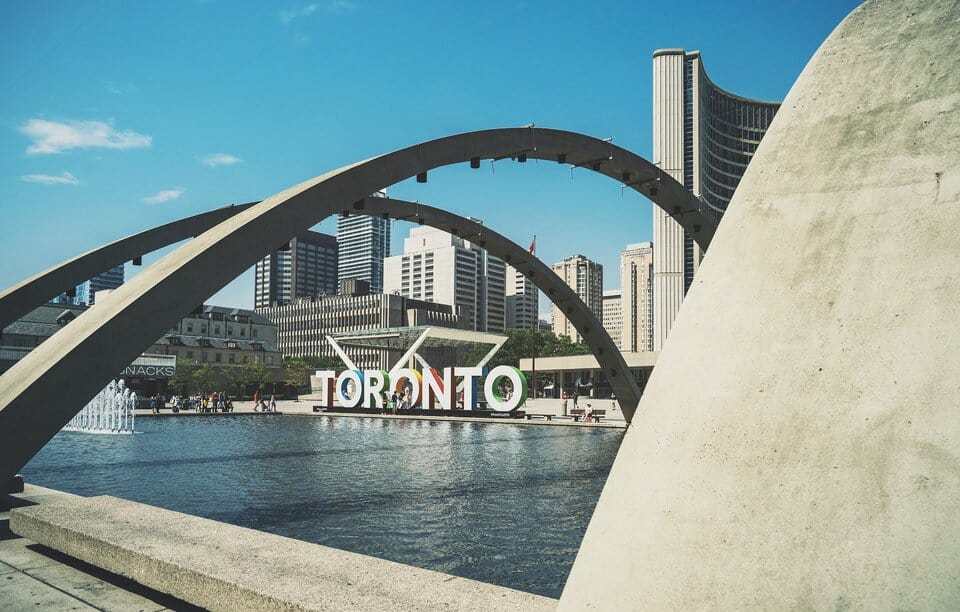Canada is one of the best countries to live in, boasting stunning landscapes, a dynamic culture, and friendly people. It is also a large country where the cost of living and salaries vary significantly across its 13 provinces and territories.
So, it would help to know the affordability ranking of Canadian provinces if you’re looking to immigrate to Canada or relocate to a new city.
In this article, we’ve rounded up the 10 most affordable places to live in Canada. To take you a little further, we have included the list of the most expensive cities too.
The 10 Most Affordable Places to Live in Canada
We took the estimated income-to-expense ratio to rank the 10 most affordable provinces to live in Canada. We’ve compared the median household income to the cost of living (average estimated expenditure per household) in Canada’s 10 provinces. So, the most affordable province has the highest income-to-expense ratio, as shown below:
| Affordability Ranking | Provinces | Estimated Income to Expense Ratio | Average estimated expenditure per household (Total current consumption, $) | Median after-tax income for an economic family, ($) |
| 1 | Quebec | 1.5 | 59,770 | 89,400 |
| 2 | Prince Edward Island | 1.41 | 58,183 | 82,000 |
| 3 | New Brunswick | 1.36 | 59,753 | 81,500 |
| 4 | Nova Scotia | 1.36 | 61,367 | 83,500 |
| 5 | Ontario | 1.34 | 73,805 | 99,100 |
| 6 | Newfoundland and Labrador | 1.32 | 60,345 | 79,700 |
| 7 | Alberta | 1.31 | 81,992 | 107,500 |
| 8 | Manitoba | 1.28 | 67,040 | 85,700 |
| 9 | Saskatchewan | 1.26 | 73,237 | 92,300 |
| 10 | British Columbia | 1.23 | 79,591 | 97,800 |
1. Quebec

- Estimated income-to-expense ratio: 1.5
- Cost-of-living estimate: $59,770
- Median household income:$89,400
- Median home price: $457,314
- Population: 8,787,554
- Unemployment rate: 4.1%
Quebec tops the list as the most affordable province in Canada. It has a relatively low cost of living, mainly due to cheap housing and subsidized childcare and education systems. So you’ll spend around $10 per day on childcare, while university students save 25% in tuition fees compared to their counterparts in Ontario.
The average house price in Quebec is $457,314. Residents also pay the lowest electricity rates ($0.073/kWh) since the province generates hydroelectricity.
The region boasts a healthy job market, with an unemployment rate of 4.1% (compared to the national rate of 5.2%), despite a high total tax rate (14.975%).
Its top 7 industries generate about 45% of the region’s GDP and include:
- Information and communication technologies (ICT)
- Electronics and optics-photonics
- Food and nutrition
- Manufacturing
- Green and smart building
- Life Sciences, health, and technologies
- Video games and digital solutions
2. Prince Edward Island

- Estimated income-to-expense ratio: 1.41
- Cost-of-living estimate: $58,183
- Median household income: $82,000
- Median home price: $397,136
- Population: 173,954
- Unemployment rate: 7.2%
Besides being one of Canada’s smallest and less populous regions, Prince Edward Island (PEI) is among the most affordable places to live. It has a low cost of living, while residents enjoy a comfortable lifestyle.
Buying a house in PEI costs about 50% less than the nation’s average price. Alternatively, you can rent an apartment between $1,055 to $2,000 per month. Buying groceries is also cheaper since agriculture is one of the island’s thriving industries.
Although PEI’s unemployment rate (7.2%) is slightly higher than the overall rate of 5.2%, residents can find job opportunities in the island’s industries, such as:
- Agriculture
- Tourism
- Fishing
Check out these best things to see and do when visiting Prince Edward Island.
3. New Brunswick

- Estimated income-to-expense ratio: 1.36
- Cost-of-living estimate: $59,753
- Median household income: $81,500
- Median home price: $286,689
- Population: 825,474
- Unemployment rate: 6.1%
Flaunting vast areas of natural attractions, New Brunswick is another affordable place to live in. The province’s low cost of living is mainly due to relatively cheap food and housing prices. It has the lowest average home price ($286,689) in Canada and is the easiest region to acquire land.
Additionally, residents enjoy tax benefits and rebates like the New Brunswick Child Tax Benefit (NBCTB). Plus, education is free to the high school level, and post-secondary students can access financial aid through bursaries, loans, and grants.
You can comfortably live in New Brunswick, earning a decent income from its leading industries, including:
- Insurance and financial solutions
- Fishing
- Agriculture
- Information technology
4. Nova Scotia

- Estimated income-to-expense ratio: 1.36
- Cost-of-living estimate: $61,367
- Median household income:$83,500
- Median home price: $403,634
- Population: 1,037,782
- Unemployment rate: 5.7%
Nova Scotia isn’t only beautiful and slow-paced but a cheap place to live. You’ll stretch your money further in this Maritime province, especially in smaller cities and towns.
The region’s real estate space is relatively lower compared with other provinces like British Columbia and Ontario. You’ll spend less than $500,00 to buy a house, while monthly rent can be below $1,500.
The median income is slightly lower in Nova Scotia than in other provinces, while the cost of food is relatively higher. But you’ll spend less on entertainment and utilities like electricity, water, and garbage collection.
5. Ontario

- Estimated income-to-expense rate: 1.34
- Cost-of-living estimate: $73,805
- Median household income: $99,10
- Median home price: $848,120
- Population: 14,223,942
- Unemployment rate: 4.9%
Toronto, Ontario’s largest city, is expensive, mainly due to its high housing costs. But smaller cities and rural areas have a low cost of living. For instance, you can pay a monthly rent of $1,200 (or less) in smaller towns like Rainy River and Sudbury.
Ontario’s unemployment rate (4.9%) is notably lower than the nation’s average. That’s because this region has vibrant industries like automobile manufacturing, technology, and mining. Hence, you’re likelier to land a job in Ontario, earn a decent income, and enjoy a higher quality of life than in other Canadian provinces.
6. Newfoundland and Labrador

- Estimated income-to-expense ratio: 1.32
- Cost-of-living estimate: $60,345
- Median household income: $79,700
- Median home price: $289,964
- Population: 533,710
- Unemployment rate: 11.7
Besides being beautiful and safe, Newfoundland & Labrador is an affordable place to live. Residents enjoy a high quality of life, mainly in healthcare, education, and housing.
The province comes second in the lowest housing prices, averaging below $300,000. In addition, electricity, entertainment, and transport costs are lower than Canada’s average. But Newfoundland & Labrador’s unemployment rate is higher than the nation’s average. And that’s because there are fewer job opportunities for skilled workers.
Related: Newfoundland and Labrador minimum wage.
7. Alberta

- Estimated income-to-expense ratio: 1.31
- Cost-of-living estimate: $81,992
- Median household income: $107,500
- Median home price: $444,570
- Population: 4,647,178
- Unemployment rate: 5.7%
Alberta boasts a good job market, as seen in its low unemployment rate and high median household income. Hence, most residents have more disposable income to meet their daily expenses. However, some utilities, like food and electricity, are on the upper side.
Still, one can live comfortably in Alberta without provincial sales tax or health premiums. In addition, low-income earners and seniors get transit passes that lower transport costs. Alberta’s housing prices are considerably lower than the nation’s average, while rent is below $5,000 per month.
8. Manitoba

- Estimated income-to-expense ratio: 1.28
- Cost-of-living estimate: $67,040
- Median household income:$85,700
- Median home price: $332,637
- Population: 1,431,792
- Unemployment rate: 4.8%
Manitoba is one of the Canadian provinces where you’ll access the good things in life at an affordable price. Firstly, the region generates hydropower. So you’ll pay less for electricity (0.099/kWh). And the cost of buying a house is approximately 50% less than the Canadian average.
Manitoba’s government ensures residents have more disposable income by offering aid, such as family affordability packages. There’s also free public health and education. In addition, the provincial sales tax is lower than in some Canadian provinces.
Related: Manitoba Family Affordability Benefit.
9. Saskatchewan

- Estimated income-to-expense ratio: 1.26
- Cost-of-living estimate: $73,237
- Median household income: $92,300
- Median home price: $282,707
- Population: 1,214,618
- Unemployment rate: 4.8%
Canada’s ‘sunniest’ province also makes it to the list of cheap places to live. Saskatchewan has one of the most affordable housing costs, averaging $282,707. It also boasts reasonable food prices, being Canada’s ‘breadbasket.’
The province has a high employment rate, free healthcare, and quality education. Its thriving economy, driven by agriculture, oil, and manufacturing industries, makes Saskatchewan attractive to immigrants.
The only downside is that Saskatchewan’s electricity rates (0.181/kWh) are slightly above the country’s average.
10. British Columbia

- Estimated income-to-expense ratio: 1.23
- Cost-of-living estimate: $79,591
- Median household income: $97,800
- Median home price: $936,098
- Population: 5,399,118
- Unemployment rate: 5.0%
British Columbia (BC) is the least affordable Canadian province on this list, having the second-highest cost of living estimate. Buying a house in BC costs a fortune, as prices exceed the country’s average. However, housing, food, and gas prices are lower in less popular cities like Marpole and Surrey.
With an unemployment rate slightly lower than Canada’s average, finding a job in BT is easy. High living standards exist, especially in large cities like Vancouver and Victoria.
Related: Best Seniors Discounts in British Columbia.
Cheapest and the Most Expensive Cities in Canada
The tables below show the 10 cheapest and most expensive cities to live in Canada:
Cheapest Cities in Canada
| Rank | City | Cost of Living Index |
| 1 | Regina, Saskatchewan | 83.4 |
| 2 | Quebec City, Quebec | 88.5 |
| 3 | Saskatoon, Saskatchewan | 89.6 |
| 4 | Winnipeg, Manitoba | 89.8 |
| 5 | Red Deer, Alberta | 90 |
| 6 | Windsor, Ontario | 90.2 |
| 7 | Fredericton, New Brunswick | 91.8 |
| 8 | Montreal, Quebec | 93.8 |
| 9 | Edmonton, Alberta | 93.9 |
| 10 | Kitchener, Ontario | 97.1 |
Regina, Saskatchewan, is the cheapest city in Canada, having an 83.4 cost of living index. Since the country’s cost of living estimate is 100%, Regina’s cost of living is 16.6% below Canada’s.
Most Expensive Cities in Canada
| Rank | City | Cost of Living Index |
| 1 | Vancouver, British Columbia | 121.3 |
| 2 | Toronto, Ontario | 118.6 |
| 3 | Victoria, British Columbia | 117.4 |
| 4 | Markham, Ontario | 114.5 |
| 5 | Nanaimo, British Columbia | 108.6 |
| 6 | Mississauga, Ontario | 106.1 |
| 7 | Calgary, Alberta | 102.7 |
| 8 | Surrey, British Columbia | 102 |
| 9 | London, Ontario | 102 |
| 10 | Ottawa, Ontario | 101.6 |
Vancouver, British Columbia, is the most expensive city, with a cost of living index of 121.3. Hence, its cost of living is 21.3% more than the nationwide average.
Methodology
In this study, we aimed to assess the affordability of living in all 10 Canadian provinces by comparing income and expense data. The following steps were undertaken to achieve this objective:
1. Data Collection and Estimation: Annual income data and expense data were obtained from the Canadian government statistics website for all 10 provinces.
The income data was collected for the latest available year.
Data Sources:
a. Median annual after-tax income for economic families
According to Statistics Canada, the median after-tax income for economic families (latest available data).
*An economical family refers to a group of two or more persons who live in the same dwelling and are related to each other by blood, marriage, common law, adoption, or a foster relationship.
b. Household Spending, Canada
According to Statistics Canada, annual total current consumption by households in the provinces as Survey of Household Spending (SHS) data.
Total current consumption specifically captures the value of goods and services consumed, which aligns with the cost of living concept. Also, it excludes Investment and Government Spending
2. Calculation of Ratios: The collected income and estimated expense data were used to calculate the ratio between income and expenses for each province. This ratio served as a measure of the affordability of living in that particular province. A higher ratio indicated better affordability, suggesting that individuals in that province had a relatively larger income than their expenses.
3. Comparative Analysis: The calculated ratios were then compared across all 10 provinces. This analysis allowed us to identify provinces with better affordability based on the income-to-expense ratio. The provinces with higher ratios were considered to have relatively better living affordability than those with lower ratios.
Methodology: City Ranking
In this study, we aimed to assess the affordability of living in 26 Canadian major cities by comparing the cost of living (including rent) index.
- Data Collection: Data is taken for the current year, 2023, from NUMBEO.
- Cost of living index modification: Indexes are calculated with New York as the standard in the source data. So, if a city has an index of 70, it means that, on average, the cost of living is 30% less expensive than in New York City.
We modified the index from the source data to represent the standard of 100 to be from the Canadian city’s average.




Just for clarity, do Victoria and Vancouver as used here refer to the cities themselves or to the metropolitan areas (greater Victoria and greater Vancouver)?